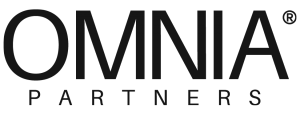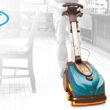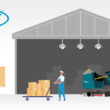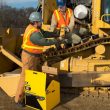Three Common Floorcare Mistakes and How to Avoid Them
Health, safety, and proper maintenance of facilities are top priorities for organizations in every industry. Procurement leaders are working to align with facility managers and identify necessary products and services to keep floors in the best shape possible. There’s often a disconnect about the correct floor care products needed for diverse locations or environments. Mistakes in sourcing the right floor care products can cost millions, especially, in cases like a university campus (UCLA with 45,000+ students) or in airports like Atlanta International with more than 100 million passengers flying annually.
To better manage the details involved in making the proper floor care decisions, procurement officers can collaborate with a cooperative purchasing organization for guidance in spend management, insight from flooring experts, and access to industry-leading supplier solutions to get the job done successfully.
What’s at stake? “Nearly 90% of customers polled stated that dirty floors, spills, and stains would negatively impact their perception of a facility.”
What are the common floorcare mistakes in the U.S. today?
While floor care is complicated, research shows that the top three mistakes made in floor care decisions in the United States today are:
- Choosing the wrong floor finish
- Maintaining the floor incorrectly
- Not asking the right questions
How can working with OMNIA Partners help save you both time and money in sourcing the right floor care products?
Spartan Chemical floor care products are available through OMNIA Partners distributors, whose contracts have been competitively solicited and publicly awarded, allowing for immediate access to what you need when you need it with complete transparency and compliance.
Now, let’s take a look at how purchasing professionals can avoid these common mistakes with advice from Rebecca Kaufold, Chemist at Spartan Chemical, responsible for new product development for coatings of resilient substrates.
#1 Choosing the Wrong Floor Finish
Simply put, floor finishes help protect floors against traffic or maintenance damage so that floors last longer. While the concept appears straightforward, the challenge comes when you consider the variables. For example, how many people does the floor serve? In what type of facility is the floor located? Is the floor in an area where there are weather extremes that impact inside and outside traffic? As facility maintenance personnel make buying decisions, two of the most popular choices are percent solids and gloss, both of which have their challenges.
Percent Solids: A 20% non-volatile solids finish would need five coats to equal the same protective qualities as a 25%, which would only need four coats. Although the 20% product by itself is less expensive, there are higher labor costs for that additional (5th) application. Also, added downtime: the facility cannot be used during the extra coating and drying period.
Gloss: For most facilities, high gloss floors are the epitome of a well-maintained building—the higher the gloss, the better. However, glossy floors show every scratch and scuff, so they require more maintenance and upkeep resulting in a higher overall cost.
#2 Maintaining the Floor Incorrectly
Here are some examples of poor floor maintenance.
- Failure to dust-mop routinely
- Failure to place and vacuum “walk-off” mats at all entries regularly
- Failure to clean with a neutral detergent
- Failure to burnish occasionally to remove scratch and scuff marks
- Failure to re-coat with proper floor finishes.
Routine maintenance will prevent the ever more-expensive full strip and refill necessary when maintenance is not done correctly. Equally important, however, is to recognize routine maintenance needs to include appropriate products and a suitable schedule.
“We take our floors for granted, but if we choose the correct floor finishes, maintain the floors we choose, and make sure we ask lots of questions, our floors will serve us well for a long, long time.” – Rebecca Kaufold, Chemist
#3 Not Asking the Right Questions
This mistake in floor care relates to the other two. It happens when the purchasing agent hasn’t asked his maintenance crew what they’re seeing as problem areas; or the architect has not studied the type and amount of foot traffic or has not studied floor products for the end use in question when designing the building; or the floor product sales representative has not asked the purchasing agent, the architect, and the facility’s maintenance crew exactly what they are doing with the existing floors. Lastly, these groups may fail to ask the people living, working or simply walking in the building what they want or need in flooring.
Advice for Long-Term Maintenance
Maintenance-free floors are a misnomer. In reality, maintenance-free translates to a willingness to replace the floors more frequently in lieu of re-finishing, treating, and maintaining.
To help in this area, Spartan Chemical makes a line of resilient floor care products, which include floor finish products, floor finish removal compounds, and day-to-day floor maintenance solutions. These can be applied with mops, spray bottles, etc. that are available through the OMNIA Partners cooperative contracts with Spartan Chemical distributors.
Training in proper floor care is also available through Spartan’s CleanCheck™ Training System, via brochures and online charts, and through their maintenance programs and instructional documents.
Floor Care Products
Spartan Chemical is here to facilities in making the hard (sometimes tradeoff) decisions in order to avoid these costly mistakes. To learn more about Spartan Chemical’s extensive floor care line and solutions available through OMNIA Partners, please visit Spartan Chemical Cooperative Contract | Floor Care (omniapartners.com) and reach out today!
Brought to you by:






















